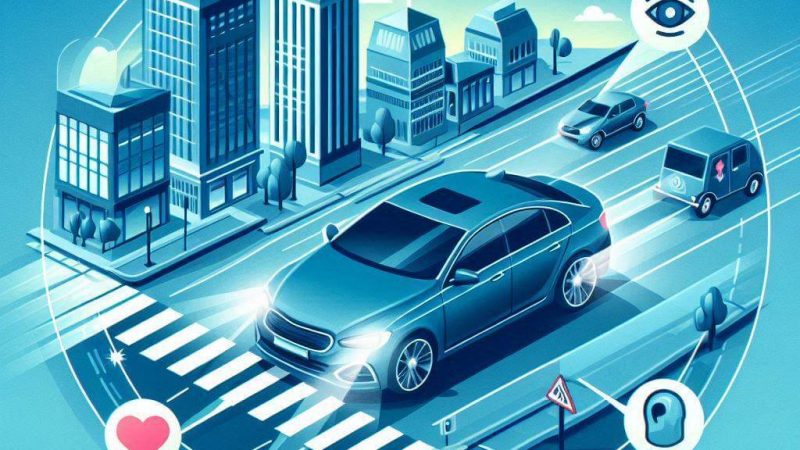Beyond the Airbag: Emerging Technologies That Could Save Your Life in a Crash

When it comes to vehicle safety, the airbag is often the first feature that comes to mind. This tried-and-true technology has saved countless lives since its introduction. However, as automotive technology advances, a plethora of new innovations are emerging that promise to enhance safety even further. Beyond the airbag, modern vehicles are being equipped with a range of groundbreaking technologies designed to protect occupants and prevent accidents. In this article, we’ll explore some of these cutting-edge advancements and their potential to revolutionize crash safety.
Contents
Advanced Safety Systems: A New Era of Protection
1. Adaptive Restraint Systems
Adaptive restraint systems are an evolution of traditional seatbelt and airbag technologies. Unlike standard airbags, which deploy at a fixed rate, adaptive restraint systems can adjust their deployment based on the severity of the crash, the occupant’s size, and their seating position. These systems use sensors and algorithms to determine the most appropriate level of protection. For instance, in a minor collision, the system might deploy a less aggressive airbag, while in a severe crash, it would activate with full force. This adaptive approach helps minimize injury by providing a customized level of protection for each occupant.
2. Pre-Collision Warning Systems
Pre-collision warning systems are designed to prevent accidents before they occur. These systems use a combination of radar, cameras, and lidar sensors to monitor the road ahead for potential hazards. If the system detects an imminent collision, it can alert the driver with visual and audible warnings. In some advanced systems, the vehicle may even apply the brakes automatically if the driver does not respond in time. This early warning mechanism can help avoid accidents or significantly reduce their severity.
3. Automatic Emergency Braking (AEB)
Automatic Emergency Braking is a critical safety feature that complements pre-collision warning systems. AEB systems use sensors to detect obstacles in the vehicle’s path. When a potential collision is detected, the system applies the brakes automatically to reduce the vehicle’s speed and minimize impact. In some cases, AEB can bring the vehicle to a complete stop before a collision occurs. This technology is particularly effective in preventing rear-end collisions and mitigating the effects of low-speed crashes.
4. Collision Avoidance Systems
Collision avoidance systems go a step further by actively steering the vehicle away from potential collisions. These systems use sensors to detect objects in the vehicle’s path and can take corrective actions, such as steering or braking, to avoid a crash. For example, if a collision is imminent, the system might steer the vehicle around an obstacle or into a safer lane. This proactive approach can prevent accidents in situations where the driver may not have enough time to react.
5. Inflatable Seatbelts
Inflatable seatbelts are a relatively new technology that combines the protection of traditional seatbelts with the cushioning effect of airbags. These seatbelts have built-in inflatable chambers that deploy during a collision to distribute crash forces more evenly across the occupant’s body. This technology helps reduce the risk of injury, especially in severe crashes. Inflatable seatbelts are particularly beneficial for protecting rear-seat passengers, including children and older adults.
6. Smart Headlights
Smart headlights use advanced technologies to enhance visibility and improve safety during nighttime driving. Adaptive headlights adjust their brightness and direction based on the vehicle’s speed, steering angle, and road conditions. For example, when driving around a curve, the headlights will pivot to illuminate the road ahead, reducing the risk of collisions with objects or pedestrians. Some systems also include features like automatic high beams, which adjust the headlight intensity based on oncoming traffic to avoid blinding other drivers.
7. Post-Crash Safety Systems
Post-crash safety systems are designed to protect occupants after a collision has occurred. These systems include features such as automatic emergency response, which can alert emergency services and provide them with critical information about the crash. Additionally, some vehicles are equipped with automatic door unlocking, which allows occupants to exit the vehicle more easily after an accident. These post-crash safety measures can be crucial in ensuring that occupants receive timely assistance and are able to escape the vehicle safely.
The Role of Artificial Intelligence and Machine Learning
Artificial Intelligence (AI) and Machine Learning (ML) are playing an increasingly important role in enhancing vehicle safety. These technologies enable vehicles to process vast amounts of data from sensors and cameras in real time, allowing them to make more informed decisions and respond to potential hazards more effectively. For example, AI algorithms can analyze traffic patterns and predict potential collision scenarios, while ML models can continuously improve the accuracy of safety systems based on real-world driving data.
The Future of Vehicle Safety
As automotive technology continues to evolve, we can expect even more innovative safety features to emerge. The integration of advanced sensors, AI, and connectivity will lead to more sophisticated safety systems that can provide enhanced protection and prevent accidents more effectively. In the future, we may see the development of fully autonomous vehicles equipped with an array of safety technologies that can eliminate human error and reduce the risk of collisions.
While airbags have been a cornerstone of vehicle safety for decades, emerging technologies are paving the way for a new era of crash protection. From adaptive restraint systems and automatic emergency braking to smart headlights and post-crash safety features, these innovations are designed to enhance occupant protection and prevent accidents. As we look to the future, the continued advancement of automotive safety technologies will play a crucial role in reducing injuries and saving lives on the road. By staying informed about these developments and understanding how they work, drivers can make better choices and take advantage of the latest advancements in vehicle safety.


